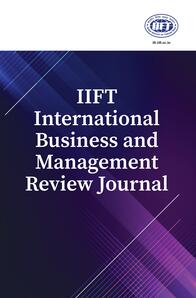
1Department of International Business, GITAM School of Business, GITAM (Deemed to be University), Visakhapatnam, Andhra Pradesh, India
2GITAM School of Business, GITAM (Deemed to be University), Visakhapatnam, Andhra Pradesh, India
Creative Commons Non Commercial CC BY-NC: This article is distributed under the terms of the Creative Commons Attribution-NonCommercial 4.0 License (http://www.creativecommons.org/licenses/by-nc/4.0/) which permits non-Commercial use, reproduction and distribution of the work without further permission provided the original work is attributed.
India and the Association of South East Asian Nations (ASEAN) regional grouping had completed three decades of diplomatic relations during this year 2022 and the year has been designated as ASEAN–India Friendship Year. As India initiated its ‘Look East Policy Strategy’ in the year 1991, the trade ties progressed between India and the ASEAN from a sectoral dialogue partnership in 1992 to dialogue and summit-level partnerships during the years 1996 and 2002, respectively. Commemorating, the two decades of India–ASEAN relations the trade ties elevated to the strategic partnership between them during the year 2012. It was in the year 2009 India-ASEAN Free Trade Agreement got signed, and India–ASEAN Services Agreement was signed in the year 2014. ASEAN views India as the most dynamic and trusted partner of East Asia and is keen to accelerate the trade and investment relations with the new Asian tiger. ASEAN also recognises India’s huge trade potential and views it as a strong balancing and stabilising partner in the Asian region. The bilateral trade between the economies has grown exponentially and reached over US$ 79 billion during the year 2020–2021. India’s investment in ASEAN has been growing and reached US$2012 billion during the year 2020, and ASEAN investment has also been growing in India. Despite an impressive trajectory of trade between India and the ASEAN, there is room for further growth through the integration of India into the Asian value chains. In this background, the study would assess the commodity trade patterns between India and ASEAN by observing the extent of India’s trade intensity and revealed comparative advantage (RCA) advantage and trade competitiveness between India and the ASEAN, the stability of these different indices of RCA were tested, in the light of the analysis few policy suggestions were drawn for future trade between India and the ASEAN.
ASEAN, Look East Policy, regional trade, Act East Policy, India, East Asia, Myanmar, ASEAN, Thailand and Singapore
Balassa, B. (1979). The changing pattern of comparative advantage in manufactured goods. Review of Economics and Statistics and Statistics, 61(2), 259–266. https://www.jstor.org/stable/1924594?seq=7
Banga, R., Gallangher, K. P., & Sharma, P. (2021). Regional Comprehensive Co-operation Agreement: Goods market access implications for ASEAN [Working Paper No. 045/3/2021]. Boston University, Global Development Centre. https://www.bu.edu/gdp/files/2021/03/GEGI_WP_045_FIN.pdf
Bhogal, P. (2018). India ASEAN economic relations: Examining future possibilities [Issue Brief 221]. Observer Research Foundation. https://www.orfonline.org/wp-content/uploads/2018/01/ORF_Issue_Brief_221_India_ASEAN.pdf
Hinloopen, J., & Marrewijk, C. van. (2001). On the empirical distribution of the Balassa index. Weltwirtschaftliches Archiv, 137, 1–35. http://doi.org/10.1007/BF02707598
Hoekman, B., & Djankov, S. (1997). Determinants of the export structure of countries in Central and Eastern Europe. World Bank Economic Review, 11(3), 471–487. https://documents1.worldbank.org/curated/ru/415691468251106363/pdf/772520JRN0WBER0Box0377301B00PUBLIC0.pdf
Krugman, P., & Obstfeld, M. (2021). International economics: Theory and policy. Pearson Publishers. https://www.pearson.com/en-us/subject-catalog/p/international-economics-theory-and-policy/P200000005956/9780137465699
Morgan, D. J. (2012, 14 December). From China to ASEAN: Rebalancing India’s trade. Gateway House: Indian Council on Global Relations. https://www.gatewayhouse.in/china-asean-rebalancing-indias-trade/https://www.routledge.com/Corporate-Links-And-Foreign-Direct-Investment-In-Asia-And-The-Pacific/Chen-Drysdale-Davidson-Siemensen/p/book/9780813389738
Raghuramapatruni, R. (2012). India’s trade with the ASEAN. Abhijeet Publications. https://www.researchgate.net/publication/321671648_India's_Trade_with_the_ASEAN
Vollrath, T. (1991). A theoretical evaluation of alternative trade intensity measures of revealed comparative advantage. Review of World Economics, 127, 265–280. https://www.scirp.org/(S(i43dyn45teexjx455qlt3d2q))/reference/ReferencesPapers.aspx?ReferenceID=1152675